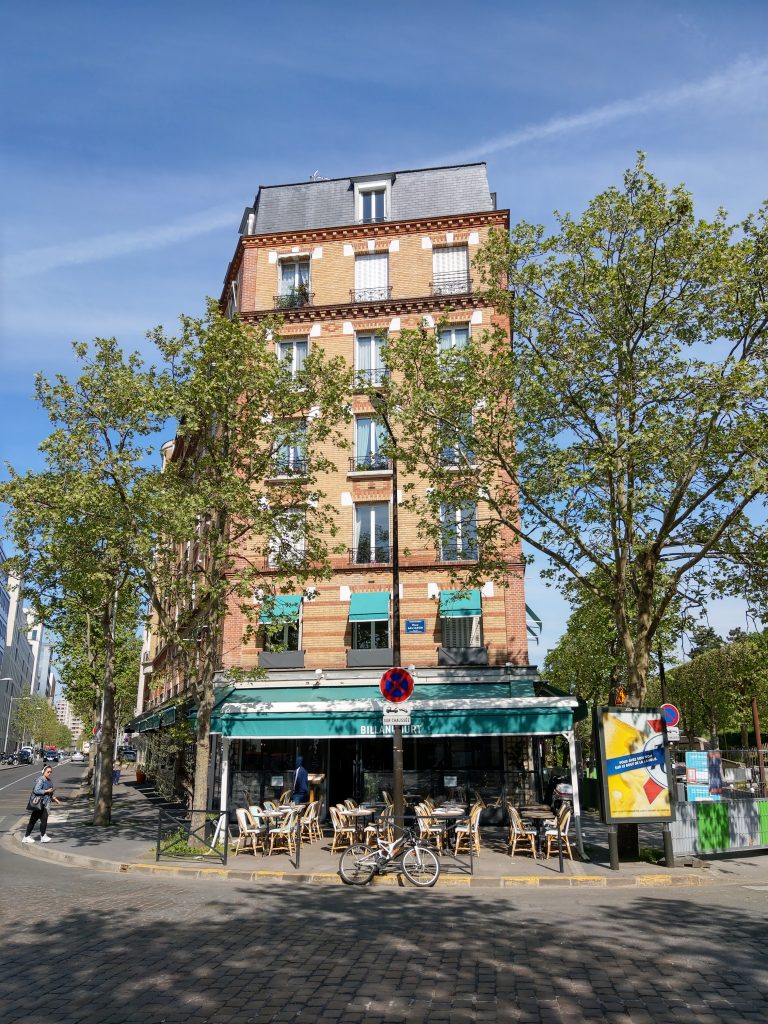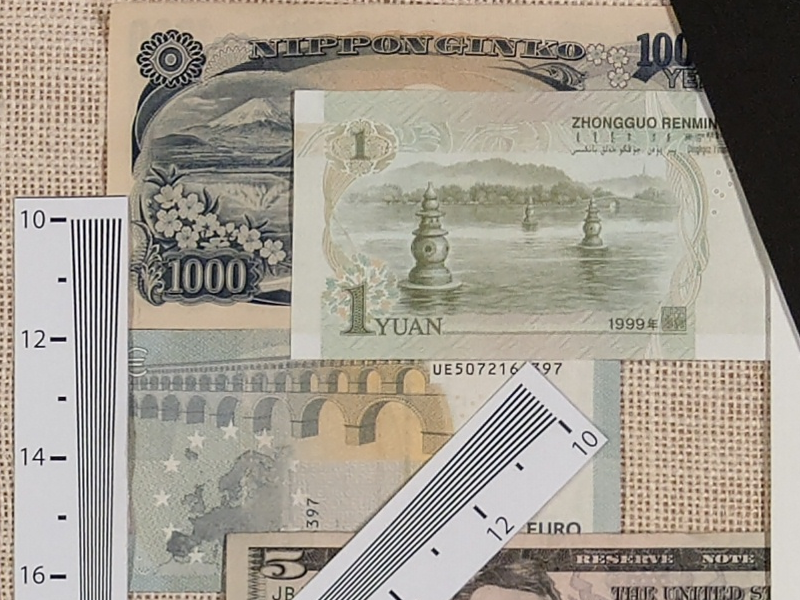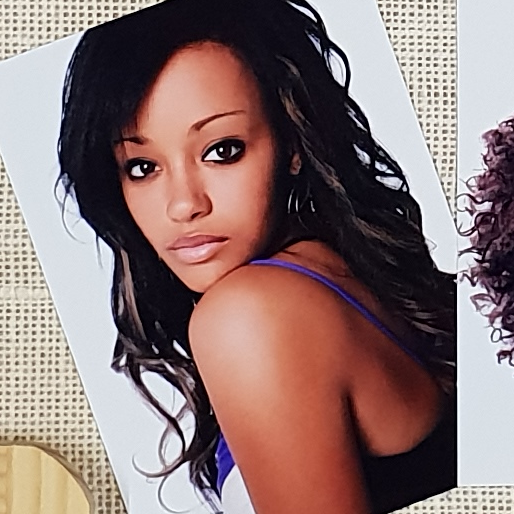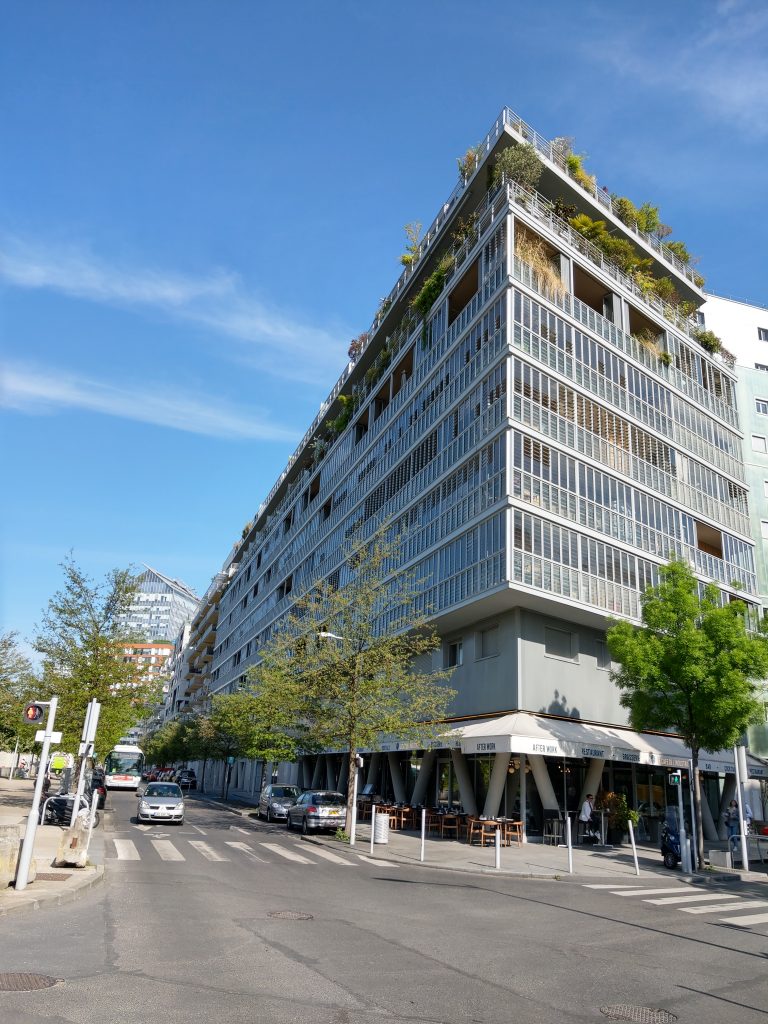Please note: In September 2019, we updated the DXOMARK Mobile test protocol to cover ultra-wide-angle performance and renamed the protocol DXOMARK Camera. We also expanded our low-light testing and created the new Night sub-score, which incorporates the previous Flash score. We have retested this device using the new Wide and Night test protocols and updated the scores in this review, but we have not changed the text from the original review. For more information, please see the articles about our new Wide and Night test protocols. Also have a look at the gallery below which contains a variety of Wide and Night shots for you to view and examine.


HTC U12+ camera review (originally published May 23, 2018)
Launching the U12+, HTC has really upped its game for photography, packing its latest flagship device with top-end imaging features. The HTC U12+ shoehorns in a 12Mp sensor and wide-angle (27mm-equivalent) f/1.75 lens with OIS for the primary camera, together with a secondary 16Mp sensor and telephoto (54mm-equivalent) f/2.6 lens for 2x optical zoom. Running Qualcomm’s latest Snapdragon 845 chipset, there’s plenty of power for imaging tasks, along with a “Pro” photography mode for greater manual control and RAW-format file support.
HTC’s Ultraspeed Autofocus 2 system offers phase detection and laser-assisted autofocus; there’s a bokeh simulation mode for artificially blurring the background in portraits; and a dual-tone LED flash unit. For video enthusiasts, the HTC U12+ can capture movies at 4K resolution up to 60fps. Our engineers have been busy getting to know the HTC U12+ ahead of the launch, shooting thousands of stills and hours of video, and we’re delighted to unveil the official DxOMark scores in our comprehensive review.
Key camera specifications:
- Dual camera setup
- 12Mp main camera with 1/2.55″ sensor (1.4µm pixel size), f/1.75 lens and OIS
- 16Mp secondary camera (1.0µm pixel size) with f/2.6 2x telephoto lens
- Phase detection and laser-assisted autofocus
- Dual-LED flash
- 4K video at 60fps
About DxOMark Mobile tests: For scoring and analysis in our smartphone camera reviews, DxOMark engineers capture and evaluate over 1500 test images and more than 2 hours of video both in controlled lab environments and in natural indoor and outdoor scenes, using the camera’s default settings. This article is designed to highlight the most important results of our testing. For more information about the DxOMark Mobile test protocol, click here. More details on how we score smartphone cameras are available here.
Test summary
With an overall DxOMark score of 103 points, the U12+ offers a significant improvement over its predecessor, the U11, placing it alongside some of the best smartphones we’ve tested. The HTC U12+ excels for still photography, achieving a Photo score of 106, thanks to outstanding performance for color and autofocus, as well as very good results for artifacts, flash, zoom, and bokeh. It’s not perfect: opportunities for improvement include HDR exposures, which display slightly limited dynamic range compared to those from the best flagship competitors; noise is also visible in low light; and although zoom shots are excellent at 2x using the telephoto lens, details are lost at longer ranges.
Achieving a video score of 95, the HTC U12+ is well-balanced between photo and video. Video strengths include accurate indoor and outdoor exposures, with good color rendering and excellent autofocus subject tracking.
Bright light
The HTC U12+ captures stunning images outdoors or in bright light conditions, recording a good range of tones, neutral white balance, and well-rendered hues that are bold, but not overly saturated. The auto HDR feature kicks in fairly consistently when required to capture more detail in the brightest and darkest tonal regions. Although the dynamic range capabilities of the HTC U12+ aren’t quite as impressive as some of the best premium devices we’ve tested, HDR results remain very good. Texture preservation is also excellent in bright light, recording lots of details in intricate areas both in static images as well as in those with some subject movement.
The HTC U12+ is very good for both noise and texture, capturing good detail preservation with minimal noise in bright light. In fact, the build-up of luminance noise we often see in areas of uniform color, such as the blue sky, is pretty much nonexistent in HTC U12+ images. Some ringing and color fringing artifacts are evident along high-contrast edges, but they’re only really noticeable when zooming in tightly on images, and not too concerning.
Low light and Flash
The HTC U12+ is also a very capable performer in both indoor and low-light environments, making it a great smartphone choice for photographers who want quality images in challenging conditions. Exposures are accurate and very usable down to extreme low light (5 lux), rendering fairly neutral white balance under artificial light sources, nicely-saturated color, and minimal color shading. Autofocus performance remains super-fast and accurate even in very low light, so you can be confident of getting a sharp shot when you request it, regardless of the lighting conditions.
The U12+ boasts a respectable compromise between detail and noise, ensuring that intricate details are captured in many low-light images; and although noise is evident in low-light conditions, it avoids unsightly chromatic noise. Flash performance is also a highlight for the HTC U12+, with minimal corner shading and noise, as well as accurate white balance for pleasant colors and true-to-life skin tones.
Zoom and Bokeh
Using the 54mm-equivalent telephoto lens on the HTC U12+’s secondary camera, close-range zoom shots up to 2x magnification offer very good image quality. Fine intricate details are preserved, and artifacts are well-controlled at 2x zoom in both indoor and outdoor shots, with the device struggling only in low light. Zoom performance isn’t as good when using longer zoom ranges, however; and although the HTC U12+ offers a fair compromise between detail preservation and noise reduction on long-range zoom shots, good sharpness is challenging for the device at 8x magnification or at 4x in low light.
In the short-range zoom samples below, the U12+ shows a level of detail that is very close to that of the Apple iPhone X. Ringing around hard edges is a little stronger for the U12+, however.
The HTC U12+’s bokeh simulation mode creates a slightly stronger blur in the background than many of its premium competitors, and works well for both indoor and outdoor portraits. Blur transitions are smooth, with blur applied to both foreground and background. Levels of noise are consistent across the picture. Depth estimation isn’t perfect, though, with some masking errors visible around the subject.
Photo scores explained
With a total photo score of 106 points, the HTC U12+ achieves one of the highest scores for still images in our testing to date. The overall Photo score is calculated from sub-scores in tests that examine different aspects of its performance under different lighting conditions. In this section, we’ll take a closer look at these image quality sub-scores.

Exposure and Contrast
HTC U12+
87
A very good, if not outstanding, exposure score, thanks to accurate test chart exposures under controlled conditions in the lab, and pleasant results in our natural test scene evaluation. Exposure scores were excellent for both outdoor and indoor images, with very acceptable results in low light, recording usable results down to 5 lux. HDR kicks in reasonably consistently when required in tricky high-contrast scenes, capturing good detail in both the highlight and shadow regions. HDR pictures are also very clean, with well-controlled noise and artifacts, but overall, the dynamic range and HDR effect isn’t as strong as with some competitor flagship devices.
In our backlit portrait natural scene, the U12+ adjusted exposure for the principal subject, but sacrificed large amounts of detail in the bright background outside the window.
Test chart exposures in the lab were excellent even in extreme low light (5 lux), recording a bright image with good color saturation.

Color
HTC U12+
87
The U12+ achieves an outstanding score for color, thanks to accurate white balance in all conditions, together with excellent color rendering in outdoor shots, and very good results in low light, too. In the comparison shot below, you can see that the HTC renders colors a touch more naturally — less saturated than the competition.
Colors are vivid and pleasant without being too saturated, and although some minor color casts are visible in some indoor pictures, they’re reasonably well-controlled and not very concerning.
The HTC U12+’s phase detection and laser-assisted autofocus is outstanding, achieving one the best scores to date. In our benchmark lab analysis, where we defocus between shots and delay both a short and long time before requesting focus, the HTC U12+ was lightning fast, finding focus consistently and accurately in all lighting conditions.


Texture
HTC U12+
71
The HTC U12+ captures excellent detail and texture, especially outdoors, coming very close to some of the best devices we’ve tested. In the bright light comparison shot below, you can see that there is very little between the U12+ and the flagship Huawei P20 and Google Pixel 2 phones in terms of rendering fine textures.
The HTC U12+ records outstanding acutance of around 80% in static scenes in both outdoor and indoor lighting conditions down to 20 lux. Although it records fewer details in very low light, scores are still good at around 60% acutance in extreme low light (1 lux, candlelight), capturing good texture and colored details.
One thing the HTC U12+ is particularly good at is color detail in low light, especially when compared to devices that use a secondary monochrome sensor, such as the Huawei P20. If you look closely at the crops below taken at 20 lux, you’ll see that the U12+ is noticeably better at preserving color detail in low light than the Huawei and the Galaxy S9 Plus. In the HTC picture, most of the color detail on the 1 Yuan note is still visible (particularly in the detailed area in the left bottom corner of the note), while in the P20 image, the note looks nearly monochrome. The Samsung is better than the Huawei at preserving color, but captures softer detail than the U12+.

Noise
HTC U12+
72
The HTC also achieves a very good score for noise, with particularly low levels of noise in outdoor shots. There is noticeably less luminance noise in areas of uniform color, such as the sky, compared to the Huawei P20 and the Pixel 2 in the samples below. Noise remains very well-controlled in shadow areas in outdoor images, and overall the HTC U12+ strikes a good compromise between noise reduction and detail preservation.
More luminance noise is visible in low light, and it’s not quite as smooth as some of the best-performing flagship competitors in this regard. Low-light results remain very good, however, and the HTC U12+ avoids unsightly chromatic noise.

Artifacts
HTC U12+
72
Artifacts are very well-controlled overall, with no major concerns. The most obvious optical flaws are ringing and colored fringing, which are occasionally visible along high-contrast edges in bright scenes, but they’re only really noticeable at close inspection or on a large-scale display. We also observed some image ghosting (when moving subjects are sometime rendered with a halo or outline) in some scenes. The ghosting effect isn’t very strong, but it occurs frequently and is no doubt connected to the HTC U12+’s multi-frame processing technologies.
An excellent score for flash, thanks to the HTC U12+’s dual-LED unit capturing some of the best flash pictures we’ve seen. There are no significant problems for flash pictures, with good exposures on both flash-only and mixed-lighting pictures, fairly accurate white balance that produces natural skin tones on portraits, and a very good compromise between texture and noise. The flash output is well-centered, with minimal light fall-off that ensures good flash intensity in the corners of the frame, and with the HTC recording a low level of noise and artifacts.

Zoom
HTC U12+
50
A good score for zoom, which is especially capable at 2x magnification in both indoor and outdoor lighting conditions, where the HTC U12+ captures the best detail we’ve seen. Few artifacts are recorded at 2x magnification in all conditions.
At medium- and long-range zoom distances, using the digital zoom between 4x and 8x magnification, the HTC U12+ offers a fair compromise between texture and noise. It’s not quite as good as some of the best competitors at these zoom levels, but results remain very acceptable, especially when shooting in bright light.

Bokeh
HTC U12+
50
A very acceptable score for the HTC U12+’s bokeh simulation mode, which renders a strong and striking background blur intensity, with fairly realistic transitions in front of and behind the portrait. Depth estimation is good, if not outstanding, with mostly accurate subject masking; and although some small errors and artifacts are occasionally visible at close inspection, they’re not overly concerning when viewing images on the device’s display.
Skin tones and details are also rendered nicely, and the shape of the bokeh is good, giving a nice circle shape to spectral highlights when shooting in lower light. In the comparison below, you can see how the HTC applies stronger blur to the background than its competitors.
Video scores explained
The HTC U12+ achieves an excellent Video score of 95 points, with no significant weak points, and is a good all-rounder for shooting movies. We calculate the overall video score using the following video sub-scores: Exposure (84), Color (87), Autofocus (95), Texture (54), Noise (80), Artifacts (81), and Stabilization (92).
The device’s key video strengths are very accurate autofocus, with no field of view variation, as well as good tracking capabilities that ensure that faces and objects remain in sharp focus as you pan or move closer to your subject. In addition, “lens breathing” is digitally corrected. The HTC U12+ also captures some of the best video exposures we’ve seen overall, with excellent results in both indoor and outdoor conditions. Dynamic range in videos is also very good, with the detail captured in the brightest and darkest regions of high-contrast scenes putting the U12+ on par with some of the best devices we’ve tested.
White balance is generally accurate, and color rendering is excellent in both outdoor and indoor videos. Color is also very good in low-light videos, capturing slightly more saturated color compared to many flagship competitors. As with stills, the HTC U12+ offers a nice balance between texture and noise in video files, too. Detail preservation is excellent in bright-light videos, and although less detail is recorded in low light, noise is very well-controlled, producing some of the smoothest low-light videos we’ve seen. In the graphs below, you can see that in terms of spatial noise the HTC is on a similar level as the Huawei P20 and Google Pixel 2 in bright light, but noticeably ahead in lower light. The situation is similar for temporal noise, where the HTC records the lowest levels in our comparison.
Together with the excellent autofocus producing sharp videos with minimal focus hunting, the HTC U12+’s effective stabilization also ensures that videos are smooth and pleasant on playback. Shooting movies in all lighting conditions, any unsightly motion effects in both static and walking videos are well-controlled, as is the “jello” effect. Sharpness between frames is consistent as well.
Conclusion: HTC keeps up with the best
With improving technologies pushing the possibilities of smartphone photography forward, and mid-range devices offering very capable results, there’s pressure on manufacturers to keep their flagship devices at the top. With a new flagship in the shape of the U12+, HTC has done just that, successfully implementing its first dual-camera in some time with aplomb. Given its excellent exposures in most lighting conditions, good dynamic range, a nice compromise between texture and noise, and outstanding autofocus performance, you can be confident that the HTC U12+ will deliver in a wide range of environments. Class-leading optical zoom shots at 2x magnification and an effective bokeh simulation mode also bolster the HTC U12+’s suitability for budding smartphone portrait photographers. Add to that a very solid video performance, and the HTC U12+ will turn some heads in the smartphone market.
Pros
- Very fast and accurate autofocus
- Pleasant color and accurate white balance
- Accurate exposure and wide dynamic range
- Good detail and texture preservation
- Natural and attractive bokeh simulation
Pros
- Effective stabilization
- Good tracking and accurate autofocus
- Pleasant white balance and vivid color
- Good exposure and dynamic range
- Generally low levels of noise
Cons
- Visible artifacts in HDR images
- Visible noise in low-light images
- Low detail in long- and medium-range zoom shots indoors and in low light
Cons
- White balance instabilities indoors
- Loss of detail in low light
- Overexposed highlights in HDR scenes





































































DXOMARK encourages its readers to share comments on the articles. To read or post comments, Disqus cookies are required. Change your Cookies Preferences and read more about our Comment Policy.